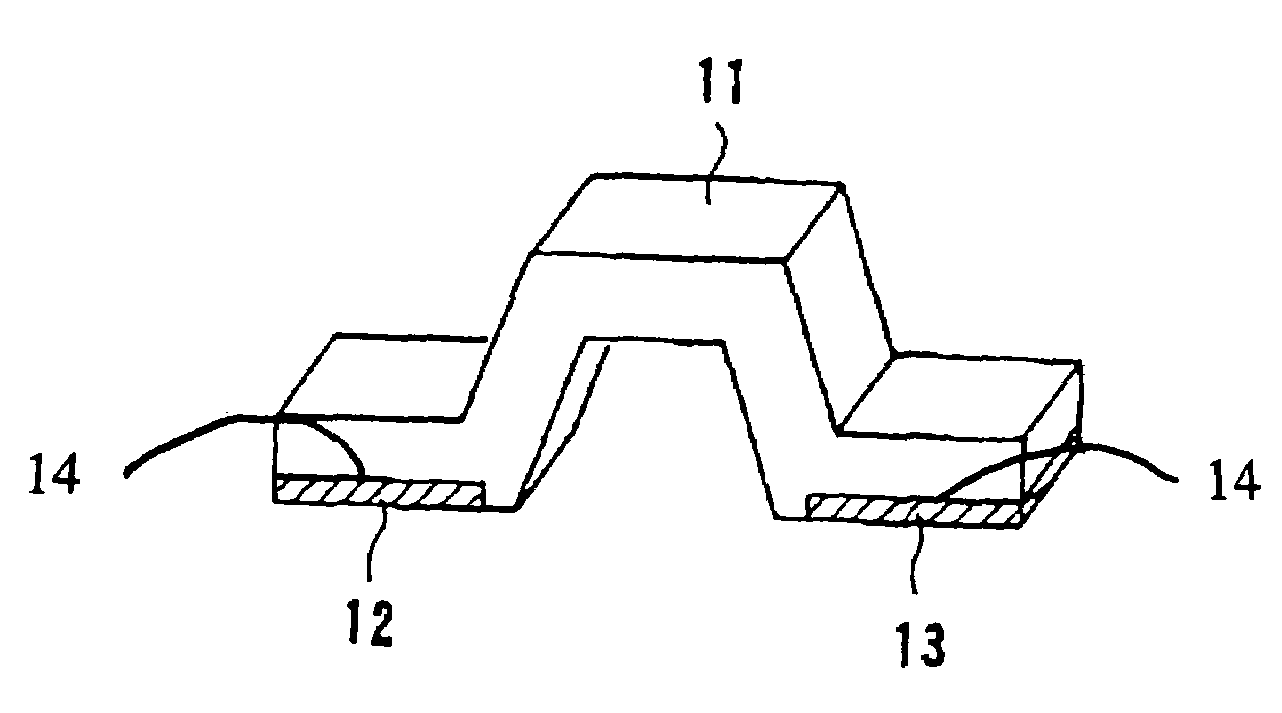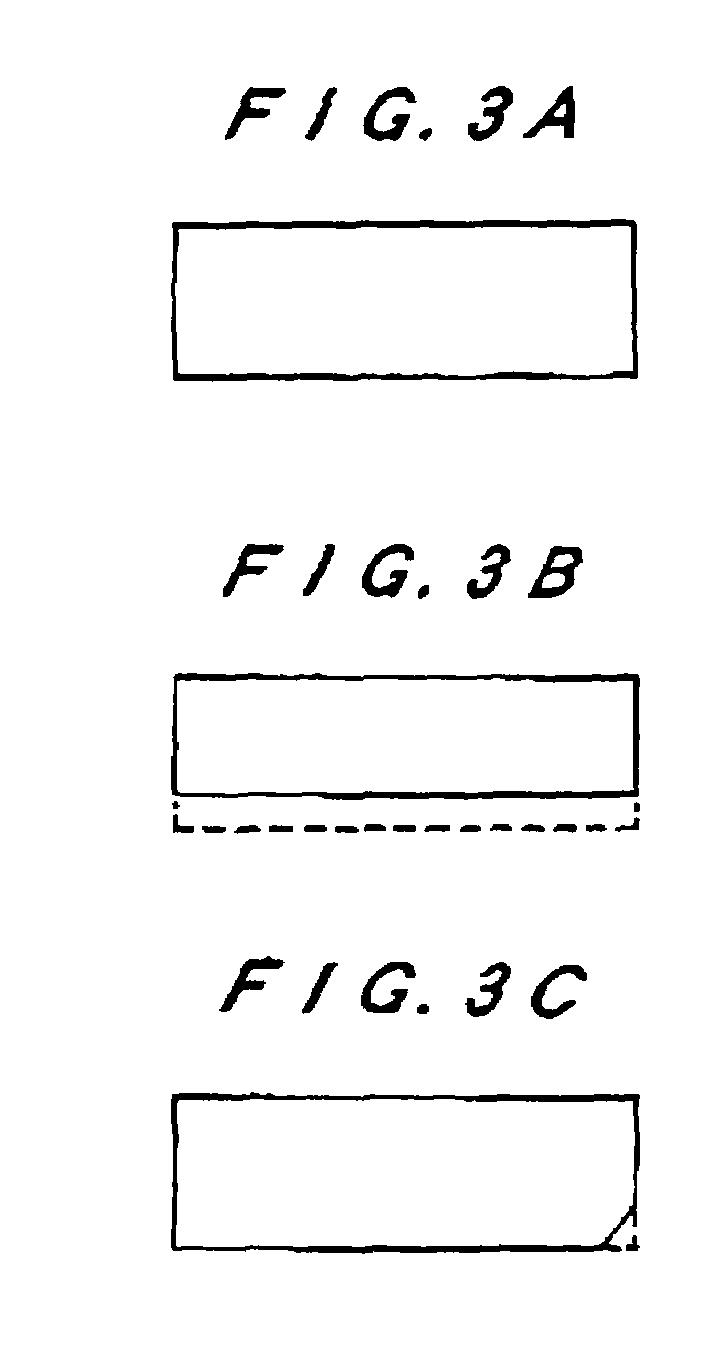Low resistance value resistor
- Summary
- Abstract
- Description
- Claims
- Application Information
AI Technical Summary
Benefits of technology
Problems solved by technology
Method used
Image
Examples
first embodiment
[0022]Preferred embodiments will be explained in the following with reference to the drawings. FIG. 1 shows an example of the structure of a low resistance value resistor in a As shown in the diagram, the resistor is provided with a metal strip members 12, 13 bonded to each end of the metal (base material) 11, serving as the resistor body, by means of (thermal) diffusion bonding and the like. In this example of the structure, the metal strip members 12, 13 are inlaid in the metal base 11, producing the so-called inlay cladding structure. Here, the base material preferably includes copper-nickel alloys, nichrome alloys or iron chromium alloys. The metal strip members having a thickness of about 50 to 200 μm are made of copper or nickel and are bonded to the base material by rolling and / or thermal diffusion bonding.
[0023]The low resistance value resistor has an extended length of about 20 mm or less, for example, width of about 5 mm, and the metal strip members are bonded so as to be...
second embodiment
[0031]Next, the low resistance value resistor will be explained.
[0032]FIG. 4 shows a low resistance value resistor 100 in the second embodiment, which is solder mounted to conductor patterns on a substrate base 150.
[0033]The resistor 100 is comprised by a metallic resistor body 110; electrodes 121, 122 serving as connecting terminals; and bonding electrodes 141, 142. The resistor 100 is constructed by two electrodes 121, 122 of a tetragonal shape and two bonding electrodes 141, 142 of a tetragonal shape, which are bonded to one resistor body 110 of a tetragonal shape, as shown in FIG. 4.
[0034]Voltage measurement using the low resistance value resistor 100 is carried out by connecting the conductor patterns of the substrate base 150 and the electrodes 121, 122, and connecting bonding-wires to the bonding electrodes 141, 142 by bonding means and the like so as to enable a voltage drop between the bonding electrodes 141, 142 to be measured. As shown in FIG. 4, preferable bonding positi...
third embodiment
[0050]A third embodiment will be explained with reference to FIG. 5.
[0051]FIG. 5 shows a resistor 500 in the third embodiment mounted on the conductor pattern of the substrate base 550. The resistor 500 is comprised by a resistor body 510 made of a metallic material and electrodes 521, 522 serving as the contact terminals.
[0052]To perform voltage measurements using the resistor 500, the conductor pattern on the substrate base 550 and the electrodes 521, 522 are connected, wires are connected to wire sites 542, 543, shown in FIG. 5, by wire bonding means, for example, and a voltage drop between the wire sites 542, 543 is measured. The width of the wire sites 542, 543 is ½ of the distance of the electrodes 521, 522, and the sites are formed where the locations are suitable for connecting wires. It should be noted that, in the above explanation, wire bonding was used as an example of obtaining a connection for measuring voltage drop therebetween, but a voltage drop can be measured with...
PUM
 Login to View More
Login to View More Abstract
Description
Claims
Application Information
 Login to View More
Login to View More - R&D
- Intellectual Property
- Life Sciences
- Materials
- Tech Scout
- Unparalleled Data Quality
- Higher Quality Content
- 60% Fewer Hallucinations
Browse by: Latest US Patents, China's latest patents, Technical Efficacy Thesaurus, Application Domain, Technology Topic, Popular Technical Reports.
© 2025 PatSnap. All rights reserved.Legal|Privacy policy|Modern Slavery Act Transparency Statement|Sitemap|About US| Contact US: help@patsnap.com



